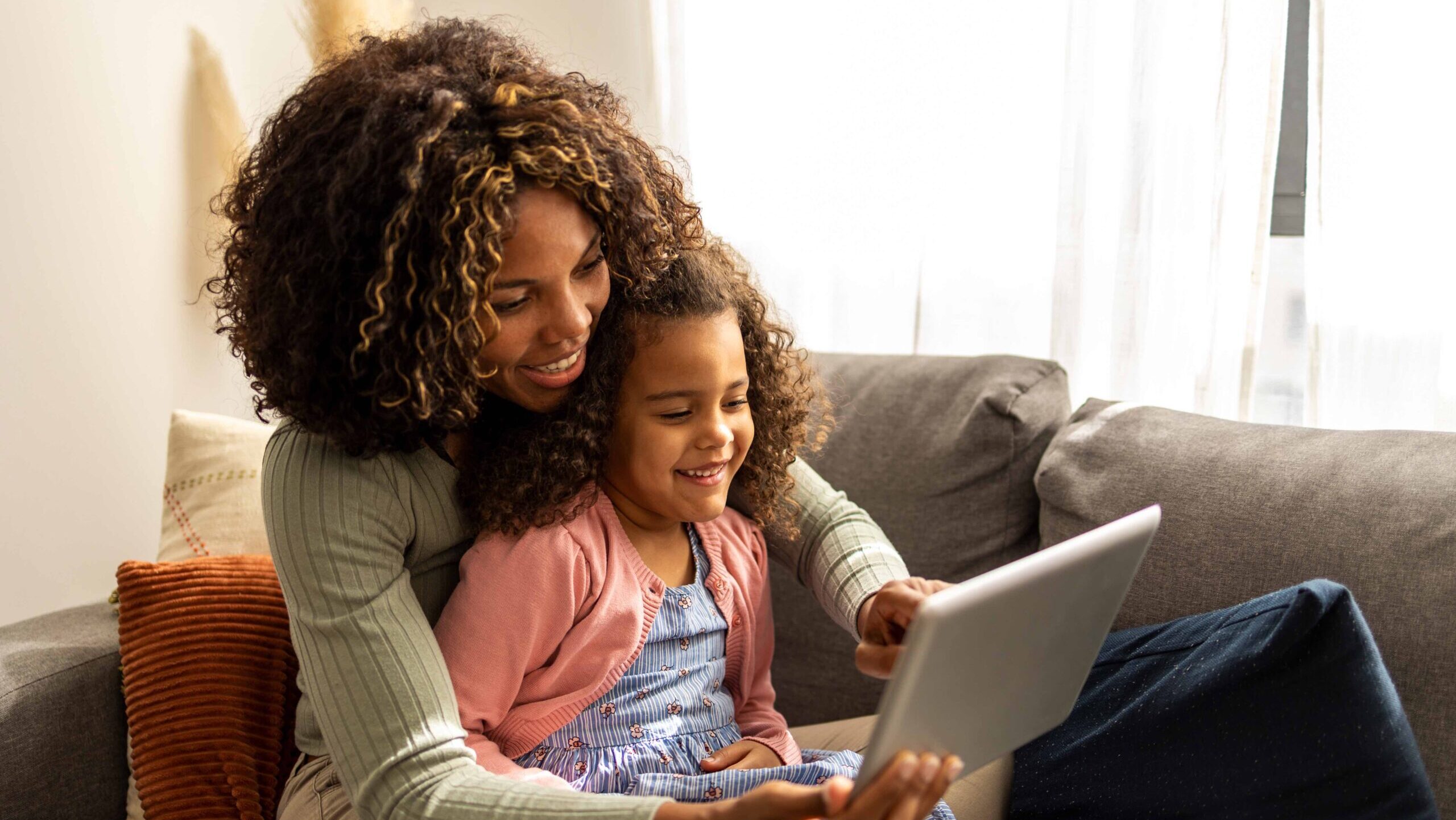New Report Outlines Best Practices for Parents and Educators in the Digital Age
In the digital age, childhood and digital media are intertwined – 97% of families with young children own at least one mobile device, as of 2020. But opinions differ wildly on the role that digital media should play in child rearing, with many parents disagreeing about the amount of time that children should spend on devices.
In a newly published, extensive research review, developmental psychologists Rachel Barr and Heather Kirkorian provide recommendations for how parents and educators can reap the benefits of digital media while mitigating many potential downsides.
“I enjoyed working on this review with my long-time collaborator Heather Kirkorian and hope that these evidence-based strategies that we suggest will be helpful to parents and educators,” said Barr, who serves as chair of the Department of Psychology.
Teaching for Transfer
The largest hurdle for any educator is a transfer of learning, when students apply the information gleaned in a new situation or context. In a traditional classroom setting it’s difficult to achieve learning transfer – when children are expected to learn from digital media the challenge becomes even trickier.

Rachel Barr, chair of the Department of Psychology.
“The biggest goal of education in any setting – including educational media – is that new information will be used in new settings and to solve new problems,” said Barr. “Two-dimensional information on screens and real, three-dimensional objects in the world don’t directly match, making it harder to transfer information. Providing educational media content that is meaningful to a child, that is supported by discussion with others and that includes some repetition can all enhance transfer of learning.”
The research review, which was published in the Journal of Applied Research in Memory and Cognition, homes in on learning transfer as a metric of success for digital media. While children under the age of three can achieve learning transfer from digital media, Barr and Kirkorian argue that just like with book reading, young children need support from others around media to enhance the lasting impact of educational digital media.
Parents and educators can package educational content in a way that enhances learning transfer. Well-designed age-appropriate educational media takes into account the cognitive load that children can handle at different developmental stages. Cognitive load is the amount of information that children can focus on and hold in their mind at any given time and differs depending on the age of the child and the experience the child has with media.
Media content should be chosen that has a simple and meaningful storyline that is free of extraneous information. Media that includes lots of details and content is more difficult to learn when presented to children in a silo. Learning increases when children are engaged in a communal exercise, facilitating a back-and-forth with their instructors or parents.
“Learning from media is enhanced by well-designed content and joint media engagement such as describing the main ideas in the media, asking questions and linking content to the child’s world,” said Barr. “Increasing engagement and decreasing distraction can harness the benefits and mitigate potential harms of educational media.”
Barr on the Hilltop
At Georgetown, Barr founded and leads the Georgetown Early Learning Project, a lab whose research focuses on the mechanics of learning and memory in infants and toddlers.
“Our team of research assistants, graduate and undergraduate students work together to better understand cognitive development of children growing up in the digital age,” explained Barr. “We invite parents of infants and toddlers to contact us to participate in our research.”
Barr is a globally-recognized expert on child development and learning. She and her colleagues have examined how grandparents and grandbabies remained connected during the pandemic via video chat, how family media ecology changed during the pandemic, and as well as long-term relationships between media use and language and studies on the effects of media on sleep. She currently serves as president of the International Congress of Infant Studies and her edited book, Media Exposure During Infancy and Early Childhood, is used as a resource across the country.
In 2021, Barr received a President’s Award for Distinguished Scholar-Teachers, which Georgetown awards to faculty to “celebrate the integration of outstanding research and excellence in teaching.”
Students interested in Barr’s research can enroll in her classes on cognitive development, experience-based learning, and cognitive neuroscience.
